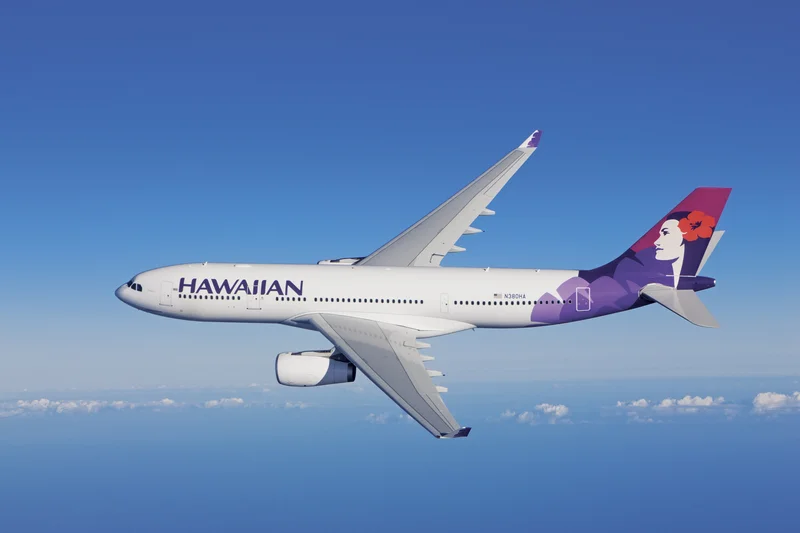Hawaiian Airlines Systems Crash: Another Global 'Oops' from Microsoft?
So, let me get this straight. On Wednesday, you couldn't check in for your Alaska Airlines flight to visit your grandma because some tech bro in Redmond, Washington, pushed the wrong button. But it wasn't just you. It was also the guy trying to buy a 48-pack of toilet paper at Costco, the kid trying to build a blocky masterpiece in Minecraft, and probably half the corporate drones in America who suddenly couldn't open their precious Office 365 spreadsheets.
Welcome to the glorious, interconnected future we were promised. It’s a marvel of modern engineering, a seamless digital utopia where everything just… works. Until it doesn’t. And when it breaks, it doesn’t just crack; it shatters into a million pieces, taking everyone down with it.
This whole mess was brought to you by something called a “configuration change” in Microsoft’s Azure cloud. The resulting chaos meant that Hawaiian, Alaska Airlines hit by global Microsoft Azure outage. That’s the corporate PR-speak for “oops.” It’s the digital equivalent of a surgeon saying, “Well, I thought that was the appendix.” One tiny tweak to something called “Azure Front Door”—a name that sounds more like a cheap screen door than a pillar of global infrastructure—and suddenly, the internet has a stroke.
The Illusion of Choice in a House of Cards
We’re sold this idea of a robust, decentralized internet. A vibrant ecosystem of competing services. What a joke. What we really have is a digital house of cards built on two or three foundations: Amazon’s AWS, Microsoft’s Azure, and Google’s Cloud. Everything else—your airline, your bank, your grocery store, your video games—is just a tenant living on the top floors.
Think of it like this: the entire global economy is a massive Jenga tower. At the bottom, you have a few giant, load-bearing blocks labeled "MICROSOFT" and "AMAZON." For years, a bunch of MBAs in Seattle have been pulling out the smaller, independent blocks and stacking them on top, telling us how much taller and more efficient the tower is getting. And then one day, an engineer nudges one of those foundational blocks just a little too hard—a “configuration change”—and the whole damn thing wobbles. Suddenly, your flight to Maui is cancelled, and you're stuck at the gate, watching the departure board flicker with error messages while a beleaguered agent tries to explain cloud computing to a 70-year-old man who just wants to see his grandkids.

This ain't some freak accident. It’s the inevitable result of a system we were railroaded into. We traded resilience for convenience. We handed the keys to our entire digital lives over to a handful of companies, and now we’re shocked when one of them trips over the power cord and plunges half the world into darkness? Who, exactly, is supposed to be accountable here? Do you get a refund from Microsoft because your flight was delayed? Offcourse not. You just get an empty apology from the airline, whose stock probably took a 2% dip for the afternoon.
Deja Vu All Over Again
And here’s the real kicker. For Alaska Airlines, this wasn’t even their first dumpster fire of the month. Less than a week before Microsoft’s global brain-fart, Alaska’s own IT systems decided to take a vacation, cancelling more than 400 flights and stranding nearly 50,000 people. You read that right. They had a complete, homegrown meltdown, and just as they were sweeping up the glass, their landlord set the building on fire.
This is just bad planning. No, "bad" doesn't cover it—this is a level of systemic fragility that borders on malpractice. They tell us to trust the system, to download the app, to go paperless, and for what? So we can stand in a two-hour line at the airport because some server in a Virginia data center sneezed…
Let’s deconstruct the corporate statement, shall we? Alaska Airlines said its teams “worked quickly to stand up our backup infrastructure.” Translation: “Our main system is so hopelessly tied to Microsoft that when it went down, we had to frantically plug in the generator we keep in the basement for emergencies.” Then came the inevitable, meaningless apology: “We apologize for any inconvenience that our guests might have experienced.” That’s like a wrecking ball operator saying, “Sorry for any inconvenience” after demolishing the wrong house.
The problem is, their trying to sell us a fantasy. The fantasy is that this is all stable. That these outages are rare exceptions. But they aren't. Amazon’s AWS went down just last week, taking out Snapchat and Reddit. Before that, it was CrowdStrike. The exceptions are becoming the rule. How many more of these "unprecedented" global outages do we have to sit through before we admit the whole model is fundamentally broken? Maybe I'm the crazy one, but I feel like relying on three companies to run the entire digital world is a recipe for exactly this kind of disaster.
The Cloud Is Just Someone Else's Broken Computer
Let’s be brutally honest. “The Cloud” is the single greatest marketing lie of the 21st century. It sounds ethereal, weightless, and infallible. It’s not. It’s just a bunch of computers in a giant warehouse owned by someone else. And when their computers break, so does your life. We’ve centralized our most critical infrastructure, creating single points of failure so massive that one misplaced semicolon can ground an entire airline. The promise was a resilient, decentralized network. The reality is a fragile monopoly, and we’re all just beta testers in their chaotic experiment.
Related Articles
The End of an Era for Hawaiian Airlines: What the 'HA' Callsign Retirement Means for the Future
The Ghost in the Machine: When Corporate Mergers Erase Digital Identities ==========================...
